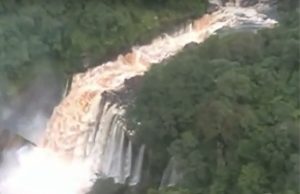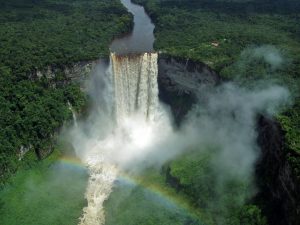World 🢖 South America 🢖 Guyana
Waterfalls 🢔 Geological wonders 🢔 Categories of wonders
Wonder
Marina Fall on Ipobe
 In short
In short
In the 1930s several large waterfalls were discovered in Guyana from airplane. One of the most beautiful discoveries was Marina Fall – approximately 152 m tall waterfall of "bridal veil" type, with two drops.
 41.3%
41.3%
GPS coordinates
Location, address
Alternate names
Height
Width
Map of the site
If you see this after your page is loaded completely, leafletJS files are missing.
 In detail
In detail
This waterfall is located some 20 km to the north from the much more popular Kaieteur waterfall. It is rarely visited – mostly by diamond miners: the first diamonds in Ipobe were found in the 1920s.
Waterfall was discovered on November 29, 1934, from an airplane by American and Canadian expedition.
This area does not have an indigenous population – thus the newly discovered geographical features did not have indigenous names and new names had to be invented. Somehow the waterfalls in Guyana were named after the British Royal Family members.
Geologist H. Bracewell proposed to name the newly discovered "bridal veil" after Princess Marina of Greece and Denmark – she was going to marry Prince George. Princess was introduced to this idea on her wedding day and, of course, agreed.
References
- New Fall on the Semang River in British Guiana. The Geographical Journal, Vol. 88., No 3 (Sep., 1936). Accessed on 25 March 2012
- Marina Falls, World Waterfall Database. Accessed on 25 March 2012
Marina Fall on Ipobe is included in the following articles:
 Linked articles
Linked articles
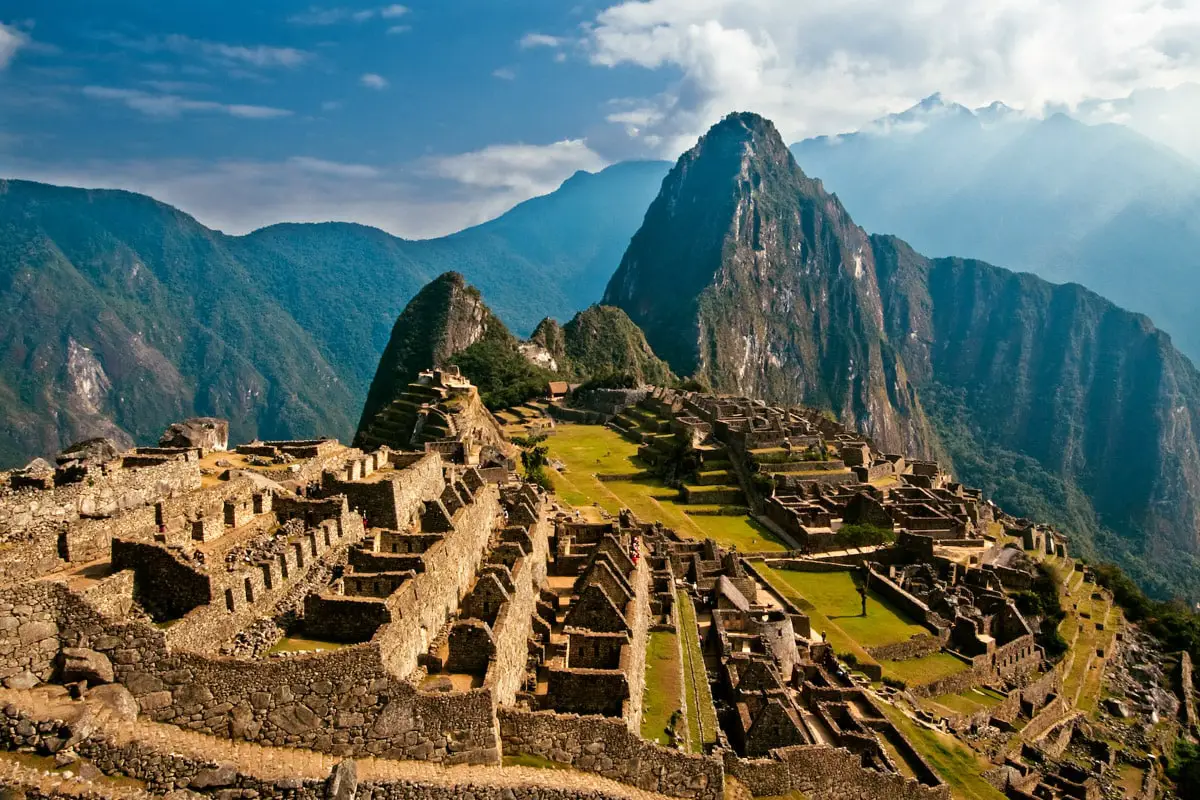
Wonders of South America
There is little doubt – South America is one of the most spectacular… maybe the most spectacular continent of the world.
There is located the second-highest mountain chain in the world, the largest rainforest, the tallest volcanoes, and the tallest and largest waterfalls. The highest biological diversity in the world is reached somewhere near the eastern ranges of the Andes in Ecuador, Peru, or Colombia.
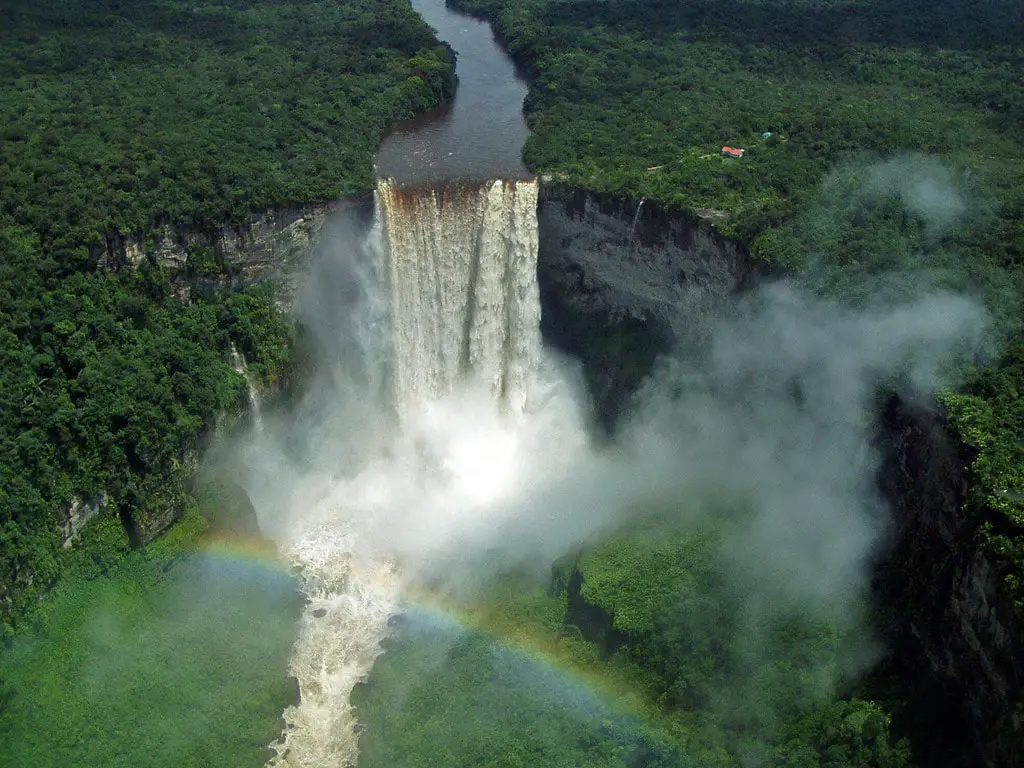
Top 10 waterfalls in Guyana
In Guyana are located more than 300 major waterfalls and rapids as well as countless smaller falls.
Wondermondo offers a list of the 10 most impressive of them.
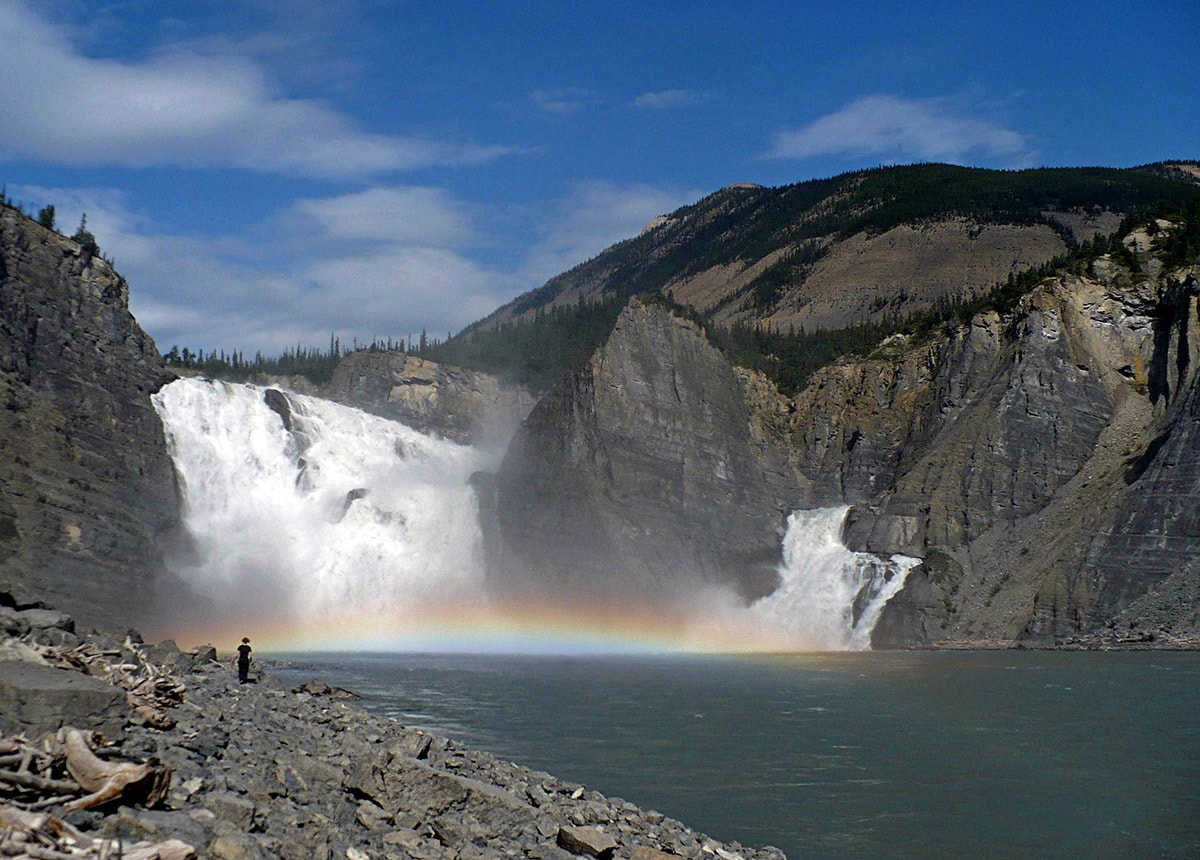
Waterfalls
Some of the most fascinating and awe-inspiring natural monuments are waterfalls or locations where a river abruptly changes its elevation.
 Recommended books
Recommended books
Navigators Travel to Guyana
Navigators Travel to Guyana is the follow-up to Navigators Travel to Barbados written by Howard Liverpool. This time our intrepid explorers travel to Guyana and learn about the history and geography of the country. They also sample some of the local cuisines and have a scary encounter with a ram sheep.
Natural Wonders of the World
From the Rocky Mountains to the Great barrier Reef and everything in between, Natural Wonders of the World combines breathtaking landscape photography and illustrations with 3-D terrain models and other explanatory artworks to reveal what lies beneath the surface and explain the geological processes to show how the features were formed. Plants and animals that inhabit each environment are also included, making Natural Wonders of the World a complete celebration of our world.

